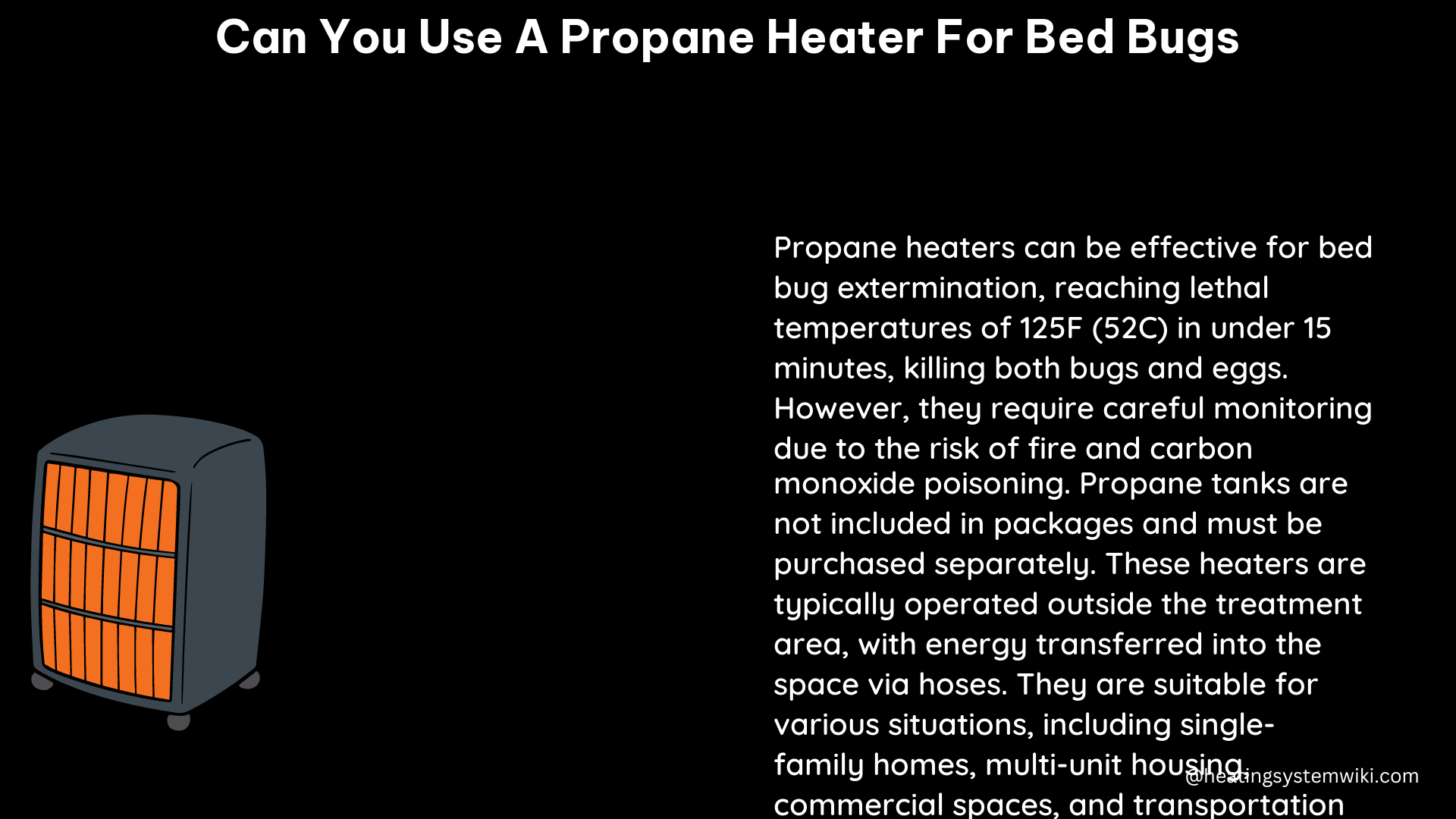Yes, propane heaters can be an effective and preferred method for treating bed bug infestations, particularly for professionals. Propane bed bug heaters, such as the Titan 450 and Titan 800 from GreenTech Heat, are direct-fired heaters that can quickly raise interior and exterior wall temperatures to lethal levels for bed bugs and other insects, including termites. These heaters are typically operated outside the treatment area, with the heated air ducted into the room, allowing for faster and more efficient treatment while reducing the risk of bed bugs and other pests migrating out of the heating zone.
Technical Specifications of Propane Bed Bug Heaters
Propane bed bug heaters are designed with the following technical specifications to ensure effective and safe treatment:
| Specification | Details |
|---|---|
| BTU Output | Typically ranging from 450,000 to 800,000 BTUs, providing the power to heat large spaces quickly and efficiently. |
| Temperature Control | Ability to maintain a specific temperature, usually between 120°F and 150°F, which is the optimal range for killing bed bugs and their eggs. |
| Portability | Propane heaters are generally portable, allowing them to be easily moved from one treatment area to another. |
| Safety Features | Includes automatic shut-off switches, temperature limit switches, and low-oxygen sensors to prevent accidents and ensure safe operation. |
| Power Source | Powered by propane tanks, which must be refilled or replaced as needed. |
DIY Bed Bug Heater Tips

If you’re considering using a propane heater for bed bug treatments, here are some important tips to ensure safe and effective use:
-
Read the Manual: Before operating the propane heater, carefully read the manufacturer’s manual and follow all instructions to the letter.
-
Ventilate the Room: Proper ventilation is crucial to prevent the buildup of carbon monoxide, which can be harmful or even fatal if inhaled in large quantities. Ensure the treatment area is well-ventilated throughout the process.
-
Monitor the Temperature: Use a reliable thermometer to continuously monitor the temperature in the treatment area, ensuring it stays within the optimal range of 120°F to 150°F for effective bed bug and egg elimination.
-
Keep Flammable Materials Away: Maintain a safe distance between the propane heater and any flammable materials to prevent the risk of fire.
-
Have a Fire Extinguisher on Hand: Keep a fully charged fire extinguisher nearby in case of an emergency.
-
Hire a Professional: If you’re not comfortable using a propane heater for bed bug treatment, it’s best to hire a professional pest control company to handle the job. They have the expertise and equipment to ensure a safe and effective treatment.
Remember, while propane heaters can be a powerful tool for bed bug elimination, it’s essential to follow all safety protocols and guidelines to prevent potential hazards. Proper preparation, monitoring, and caution are key to a successful and safe DIY bed bug treatment using a propane heater.
